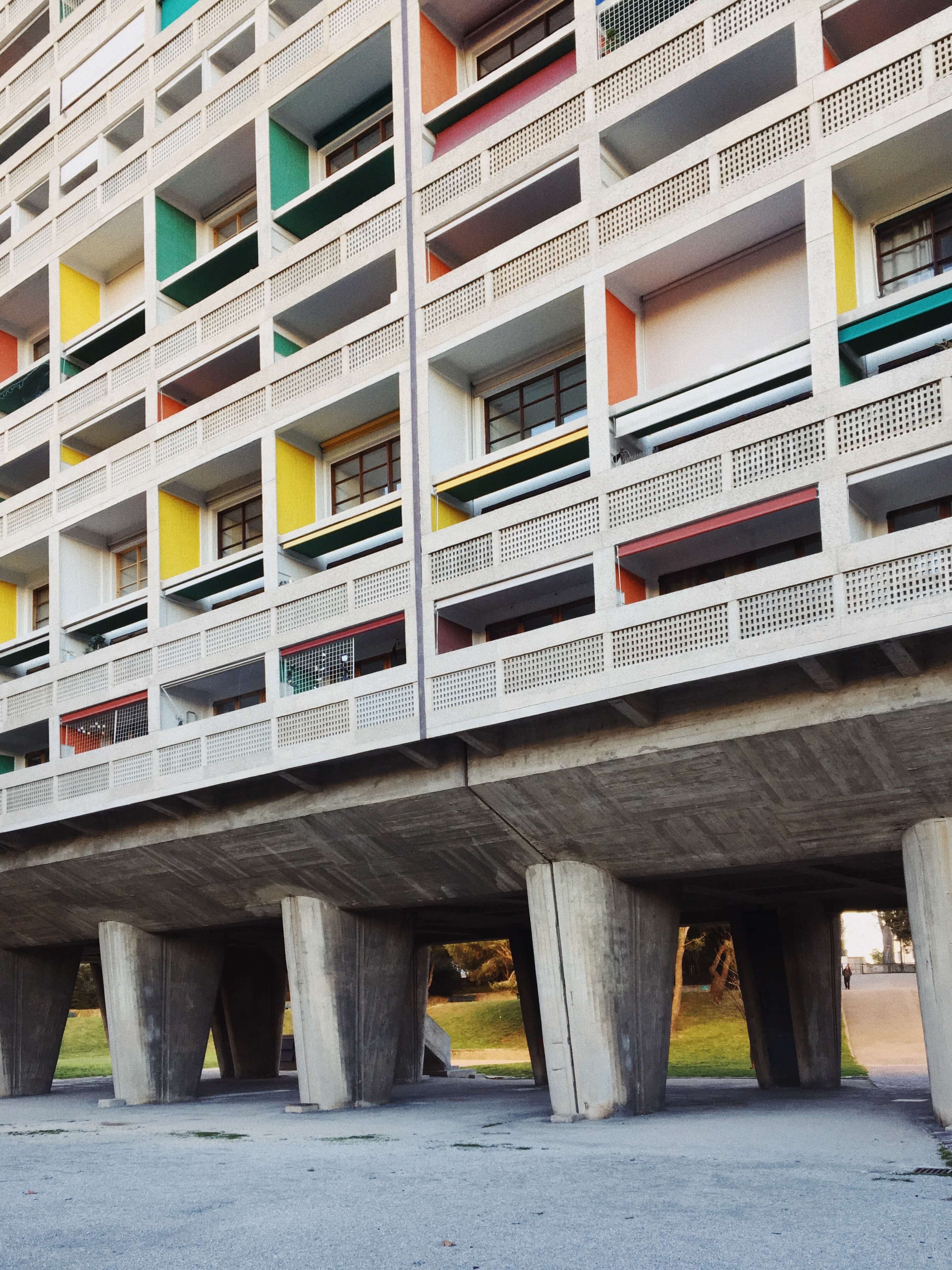Aside from the clearly complex nature of architecture, today’s current trends focus on understanding architectural design as an indispensable tool for society. Architecture enables us to understand and learn about the current scenario, characterised by ecology, sustainability and respect for the environment.
The construction of spaces specially designed for nature conservation means so much more than a tourism or leisure phenomenon. Large cities are increasingly concerned with climate change. As a result, architectural projects are being created that will permit educational interaction with nature. Thus, we have bioparks, botanical gardens and oceanariums.
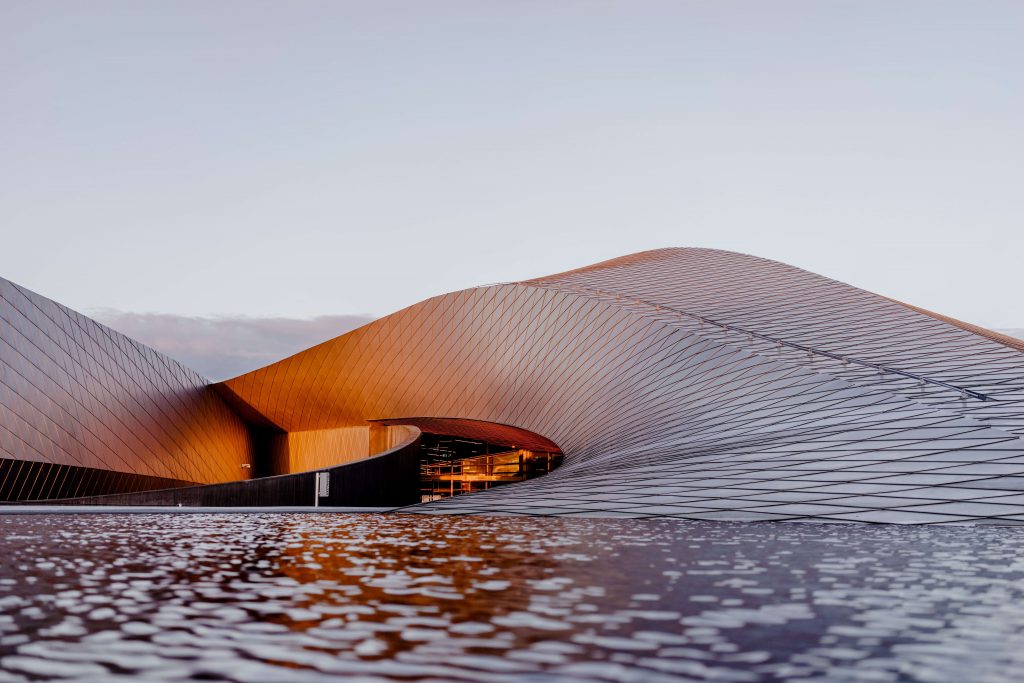
Illustration 1 The Blue Planet, Denmark (Photo by Sandro Katalina on Unsplash)
Oceanariums promote knowledge about marine life. An ecosystem upon which life on earth depends. This interesting protection of the oceans entails considerable technical difficulties in its construction. This is due to issues such as wind pressure and the forces applied on the glass walls.
One such example is the National Aquarium of Denmark, designed by 3XN, winner of the Display Award prize at the World Architecture Festival 2013 (WAF). This impressive aquarium known as The Blue Planet combines evocative impact with refined technical qualities.
The Blue Planet, National Aquarium of Denmark
In Denmark’s capital, Copenhagen, this incredible space is replete with visual and evocative references. Its aim is to safeguard the marine environment. Opened in 2013, The Blue Planet is Europe’s largest aquarium. It was designed by 3XN Architects, a studio founded by architect Kim Herforth Nielsen.
With a surface area of 9,000 m2, Denmark’s National Aquarium has a fascinating architectural concept that invites a truly immersive exploration of the building. When seen from above it looks like a powerful natural whirlpool, associated with ocean currents, movement of shoals of fish or flocks of birds.
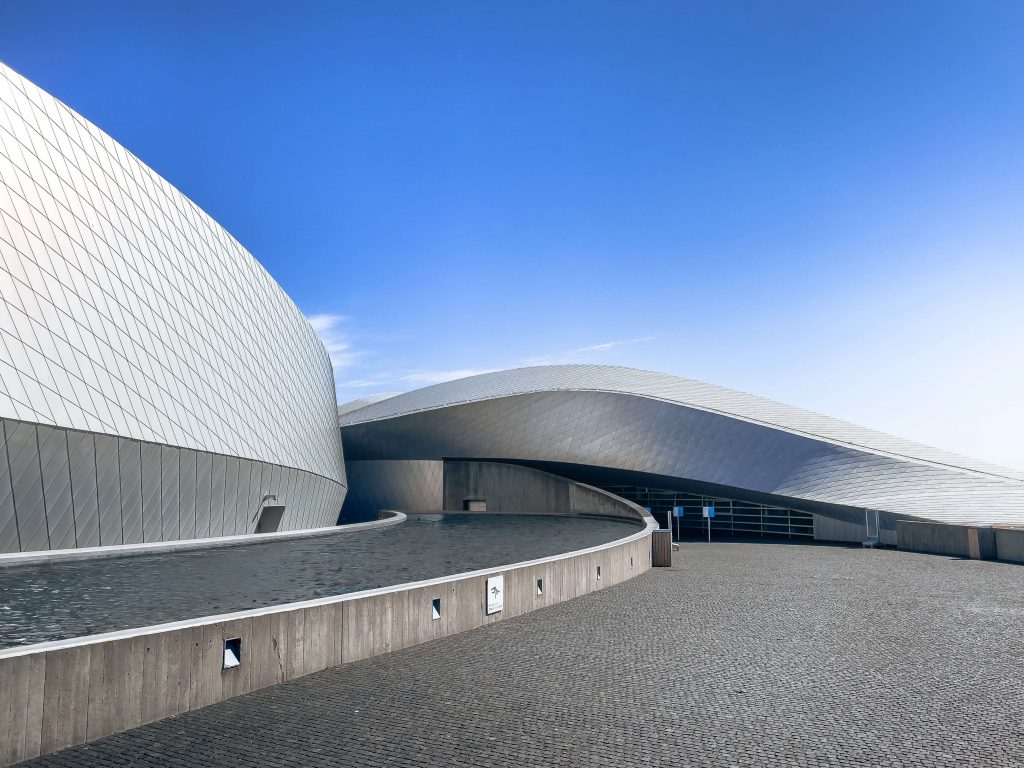
Illustration 2 The Blue Planet, Denmark (Photo by Raunaq Patel on Unsplash)
Consequently, these striking architectural forms recall the connection between marine and land-based nature. Similarly, the surrounding waters connect with the building.
On the ground, the building is perceived as organic, dynamic and flexible. This manages to create a sensation of floating, enhanced by surrounding water reflected in the aluminium sections covering the facade.
Structure, method and construction
The difficulty of creating a technically flawless project for housing live exhibits lies in the choice of highly specific materials. Thus, with careful choices, an ideal structure has evolved that allows the building to withstand massive forces and atmospheric pressures.
It is important to use extremely flexible materials for ensuring effective maintenance and insulation. In this way it is possible to build a completely sustainable architectural project. One such example is the use of acrylic glazing instead of conventional glass.
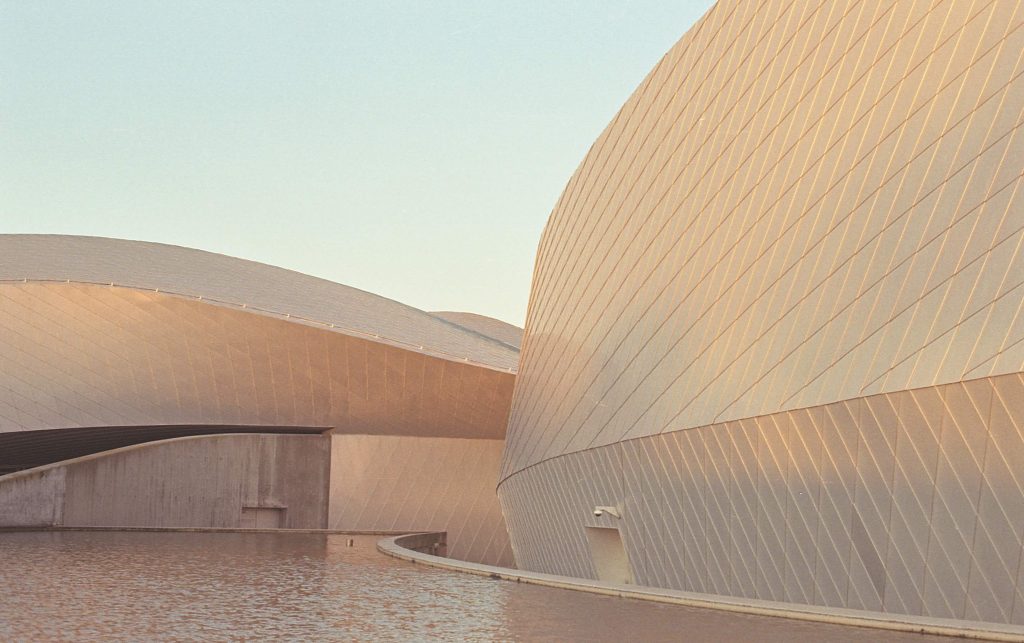
Illustration 3 The Blue Planet, Denmark (Photo by James Lansbury on Unsplash)
As a result The Blue Planet design consists of an enormous steel structure with over 33,000 aluminium tiles. These small pieces, 1.2 mm thick, adapt to the organic shape of the building. At the same time they create a really beautiful dreamlike visual reflection that recalls the city’s own climate. The structure is completed by an arrangement of load bearing reinforced concrete walls built in situ.
3XN Architects collaborated with some key partners to create the National Aquarium of Denmark. They provided a secure, sustainable and precise framework. This was indispensable for a project on this scale. As such, it was possible to create the complex geometry of the steel structure surface with Tekla BIM software. This improved efficiency in each phase of the construction project. This technology enables a more thorough and precise manufacture of the steel pieces. Therefore, errors and subsequent readjustments can be avoided.
Ecological importance of oceanariums
As well as an example of complex technology, The Blue Planet is a striking environmental landmark. It also enjoys a strategic location. The sea water that surrounds the building permits energy savings as it provides adequate and natural cooling. With over 20,000 fish and 7 million litres of water, The Blue Planet utilises a pumping and filtration system that filters and recycles sea water.
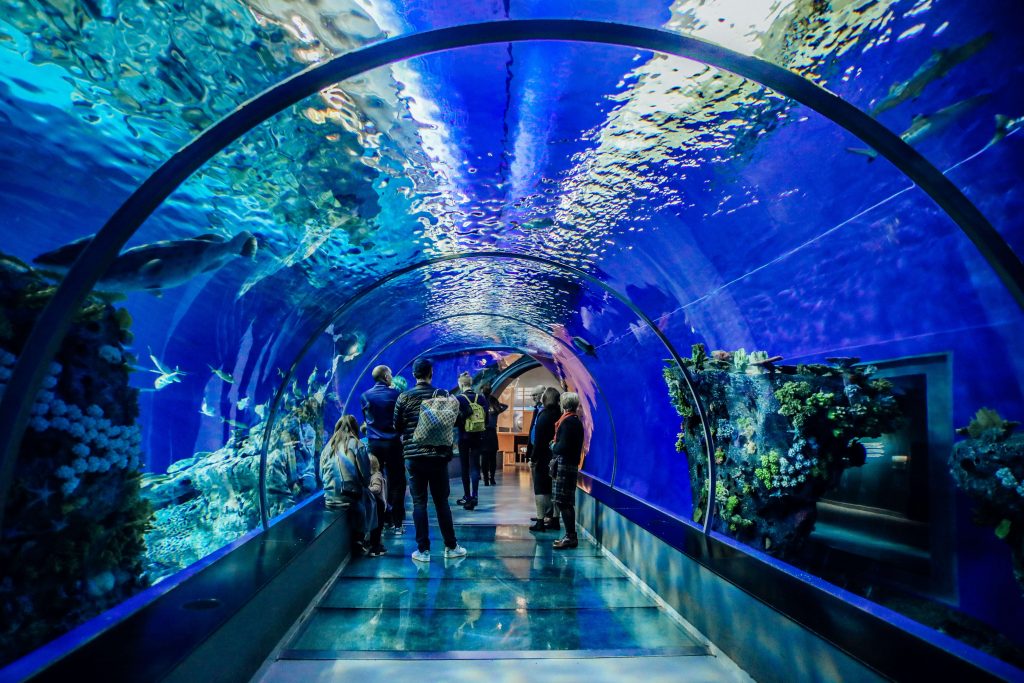
Illustration 4 Copenhagen, Denmark (Photo by Sladjana Karvounis on Unsplash)
The construction of oceanariums or aquariums is extremely significant environmentally. This is because places like this help to educate about marine life and conservation. Their purpose is to help understand the importance of caring for, and respecting, the ocean. In addition, they play a scientific role. By supporting endangered species and with research into marine species, they contribute to the sustainability of the planet.

